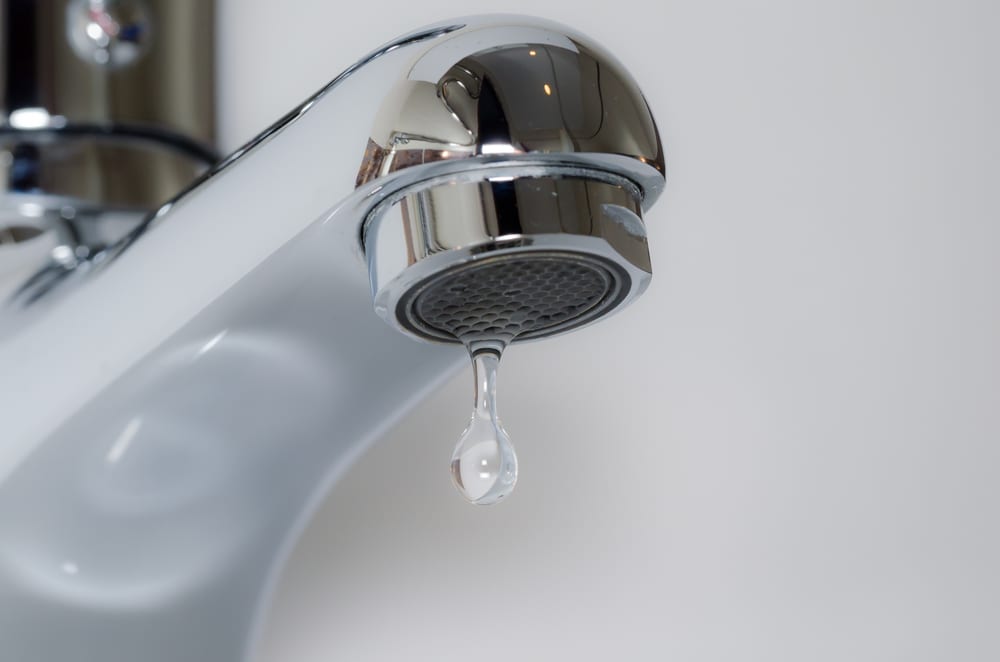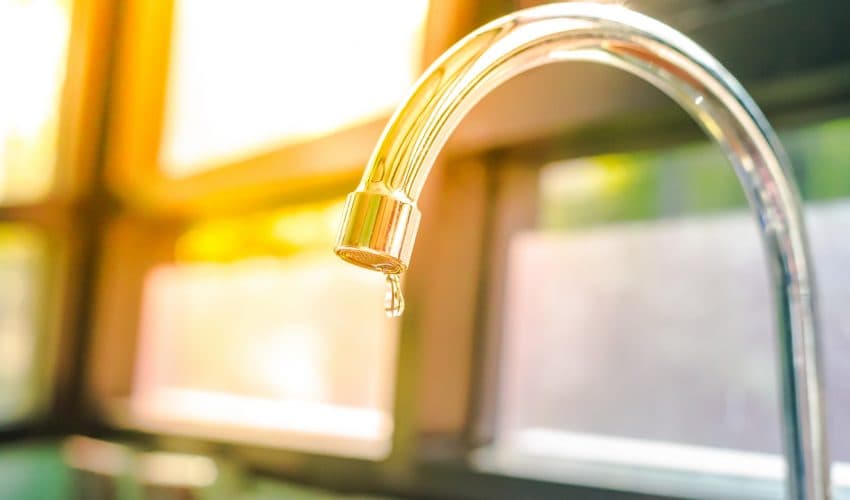Uncovering Which a Busted Faucet Would Influence Your Home
Uncovering Which a Busted Faucet Would Influence Your Home
Blog Article
Any individual seems to have their unique perception when it comes to Health Risks Posed by Leaking Faucets.

Introduction
A leaky tap could look like a small annoyance, but its effects extend far past the periodic drip. Recognizing the impacts of a dripping tap is critical for both homeowners and the environment. In this short article, we'll check out the different effects of this usual family issue and why addressing it promptly is important.
Reasons For Leaky Faucets
Leaking faucets can result from a variety of elements, including wear and tear, high water pressure, and corrosion. In time, the constant use of faucets can result in worn-out seals and gaskets, causing leakages to establish. In addition, extreme water stress can place pressure on plumbing components, bring about leakages. Deterioration and corrosion can additionally weaken tap parts, making them vulnerable to leakage.
Water Waste
One of one of the most substantial effects of a leaking faucet is water wastefulness. Also a small drip can add up to gallons of drainage gradually. This not only increases water costs however also adds to water deficiency and environmental degradation. Addressing dripping faucets quickly is crucial for conserving this priceless resource and reducing its impact on the earth.
Financial Effect
In addition to wasting water, leaking taps can also have a substantial monetary influence. Enhanced water bills are a direct effect of water waste, costing home owners numerous dollars yearly. In addition, the cost of fixing water damage brought on by leakages can be substantial, especially if left neglected for an extended duration.
Environmental Influence
The ecological effect of leaky taps extends beyond water wastefulness. By conserving water, homeowners can add to broader efforts to alleviate water shortage and safeguard all-natural ecological communities. Sustainable choices such as rainwater harvesting and water-efficient fixtures can further minimize the ecological footprint of family water use.
Technological Solutions
Advancements in innovation have led to the advancement of clever faucets and water-saving devices that assist decrease water waste. Smart taps make use of sensing units to detect movement and readjust water circulation as necessary, reducing waste without sacrificing convenience. Water-saving devices such as aerators and low-flow showerheads are likewise reliable in preserving water without compromising efficiency.
Global Viewpoints
While dripping taps might seem like a local problem, they add to broader global obstacles such as water scarcity and environment change. In regions currently dealing with water tension, every decrease counts, making leakage avoidance and fixing important. By embracing water-saving practices and investing in lasting modern technologies, homeowners can play their component in dealing with these pressing worldwide problems.
Regulative Measures
Federal government regulations play a crucial role in minimizing the influence of leaky taps and advertising water conservation. From developing codes that need water-efficient fixtures to water-saving incentives and rebates, policymakers have a series of tools at their disposal. By executing and imposing these laws, federal governments can make certain that house owners prioritize water conservation in their daily lives.
Neighborhood Impact
Dealing with leaky taps needs cumulative initiatives at the neighborhood level. By elevating understanding concerning the relevance of water preservation and providing resources for leakage detection and repair service, local authorities can encourage property owners to take action. Efforts such as water-saving discount programs and leak detection campaigns can incentivize habits change and promote accountable water usage.
Instance Studies
Real-life instances of the impact of leaking faucets emphasize the importance of proactive maintenance and timely repairs. From water damages to skyrocketing water expenses, the effects of neglecting leaks can be serious. By sharing these case studies, house owners can much better comprehend the relevance of addressing leaky faucets without delay.
Educational Campaigns
Educational projects play a crucial function in elevating understanding concerning the impacts of leaking taps and advertising water conservation practices. With workshops, workshops, and online sources, house owners can discover how to spot and fix leakages themselves. By empowering people with understanding and tools, instructional campaigns can foster a culture of accountable water usage within communities.
Wellness Worries
Leaky faucets can produce conducive environments for mold and mildew and mildew development, posturing health threats to residents. The existence of mold can exacerbate respiratory concerns and allergies, specifically in prone people. Furthermore, water damages arising from leakages can jeopardize the architectural integrity of structures and cause expensive fixings.
Do it yourself vs. Expert Fixing
When confronted with a leaky tap, home owners typically discuss whether to try repair work themselves or work with a professional plumber. While do it yourself repair services can save money, they might not always deal with the hidden issue effectively. Professional plumbing professionals have the competence and equipment to detect and repair leaks correctly, ensuring long-term solutions and satisfaction for house owners.
Safety nets
Stopping leaking faucets requires routine maintenance and proactive actions. Straightforward jobs such as replacing worn-out washing machines and seals can prevent leaks from creating. Furthermore, updating to premium fixtures and decreasing water pressure can help extend the lifespan of taps and decrease the danger of leaks.
Conclusion
Finally, the impacts of a leaking faucet extend much beyond the periodic drip. From water wastefulness and raised water bills to health concerns and environmental influence, the repercussions of disregarding leaks can be substantial. By dealing with leaky faucets promptly and taking on water-saving techniques, homeowners can minimize these impacts and contribute to a much more lasting future.
Why You Shouldn’t Ignore a Leaky Faucet in Your Home
What Causes a Leaky Faucet?
Various factors can cause a leak, from loose and worn-out parts to corrosion. Your faucet has four essential components from which most plumbing issues will stem: the O-ring, the valve seat, the washer and the gasket.
What Is an O-Ring?
The O-ring is a stem screw that fastens parts of the faucet in place, preventing water from leaking out of the spout. Depending on your faucet type, the stem might have multiple O-rings. Water will drip from the faucet’s handles and base if this part breaks or deteriorates.
What Is a Valve Seat?
The valve seat controls the flow and temperature of the water. Found at the base of the handle, it works as a seal for the faucet’s stem. The valve seat ensures the water is allowed to flow or is blocked as the handles dictate. You’ll know it’s malfunctioning when water leaks from your faucet’s sides.
What Is a Gasket?
The gasket is found between the water inlet and the valve stem. It creates a seal between the faucet and the sink, holding its joints by aerators attached to the stem’s head. Water will trickle out from the base if the gasket isn’t working.
What Is a Washer?
The washer secures the handles and prevents leakage, serving a similar purpose to the O-ring. While the O-ring is ordinarily round and made from an elastic material, such as rubber, the washer is square-shaped and composed of brass, copper and other hard metals. If it malfunctions, corrodes or has been improperly installed, water will leak out of the handles, causing that incessant faucet drip.
Why Is a Leaky Faucet Dangerous?
A leaky faucet left alone for too long can have significant consequences.
Pest Infestations
Since bugs and rodents gravitate towards the scent of water, a leaky faucet will draw pests to your sink. Both are looking for leaks accessible through crawl spaces, which a faucet provides. If you leave water dripping for too long, you run the risk of an infestation.
Rust
If one of the faucet parts has started to corrode, the resulting rust can spread to your pipes and valves with startling speed. The rust might even lead to cracks or other impairments, resulting in more severe plumbing issues.
Your sink could also sustain damage from a leaky faucet. The water in your tap possesses sparse elements of calcium and iron that can stain your sink with repeated and prolonged exposure. Once those elements in the water have been open to the air for some time, your sink will start to rust, creating marks that can be difficult to remove.
https://www.tomsmechanical.com/blog/why-you-shouldnt-ignore-a-leaky-faucet-in-your-home

As a keen person who reads about Health Risks Posed by Leaking Faucets, I assumed sharing that post was really useful. So long as you liked our post plz remember to share it. Thank you for your time invested reading it.
Report this page